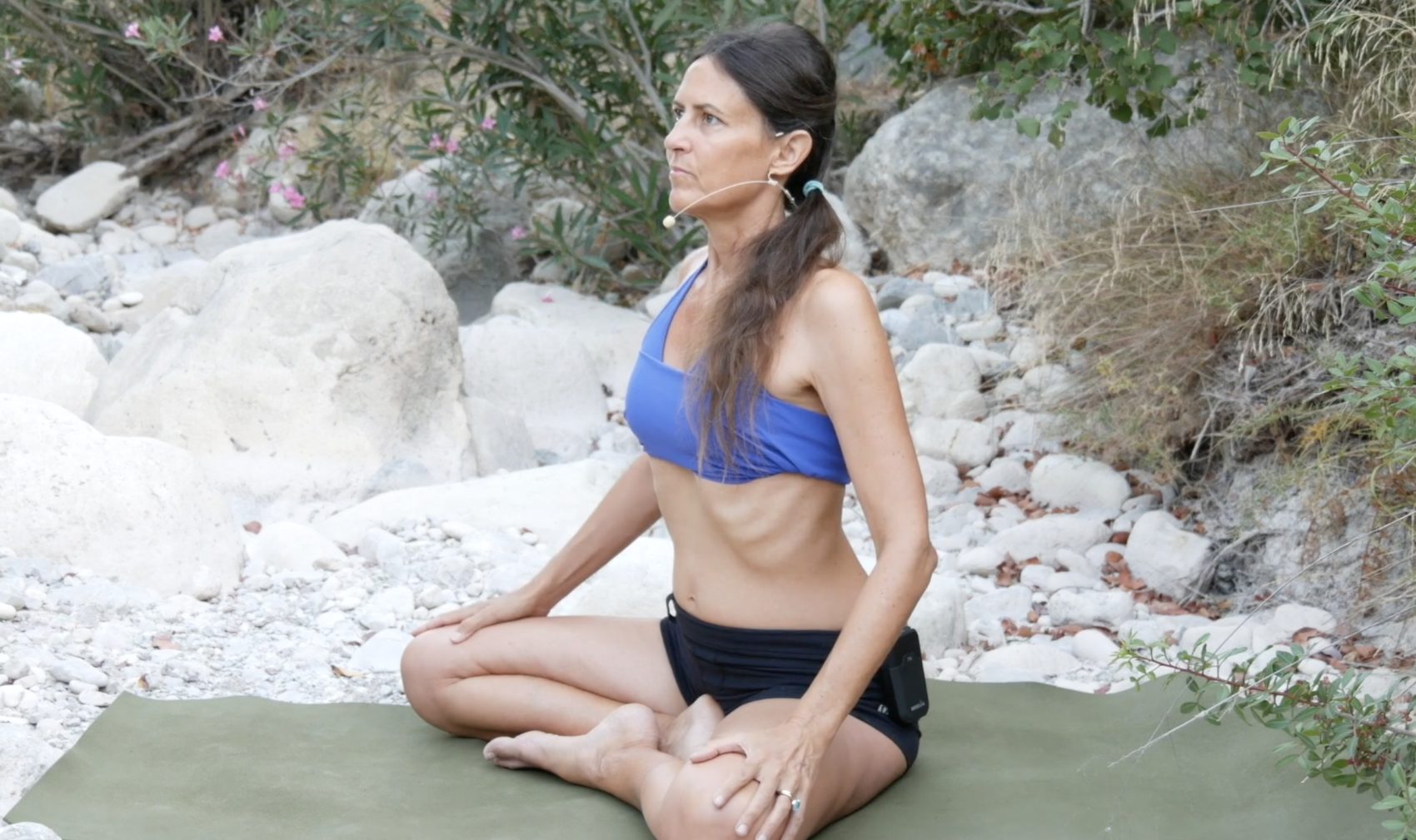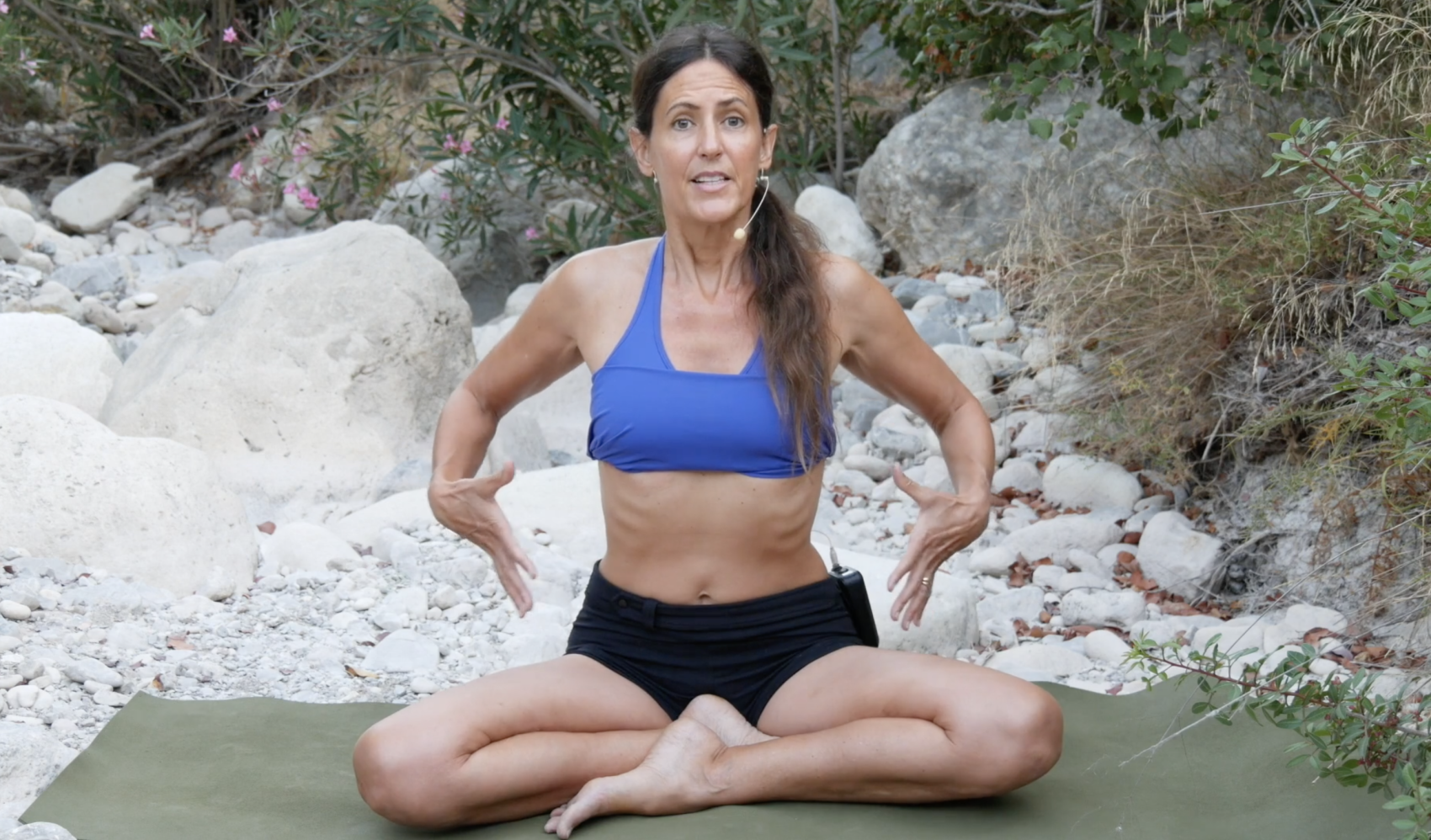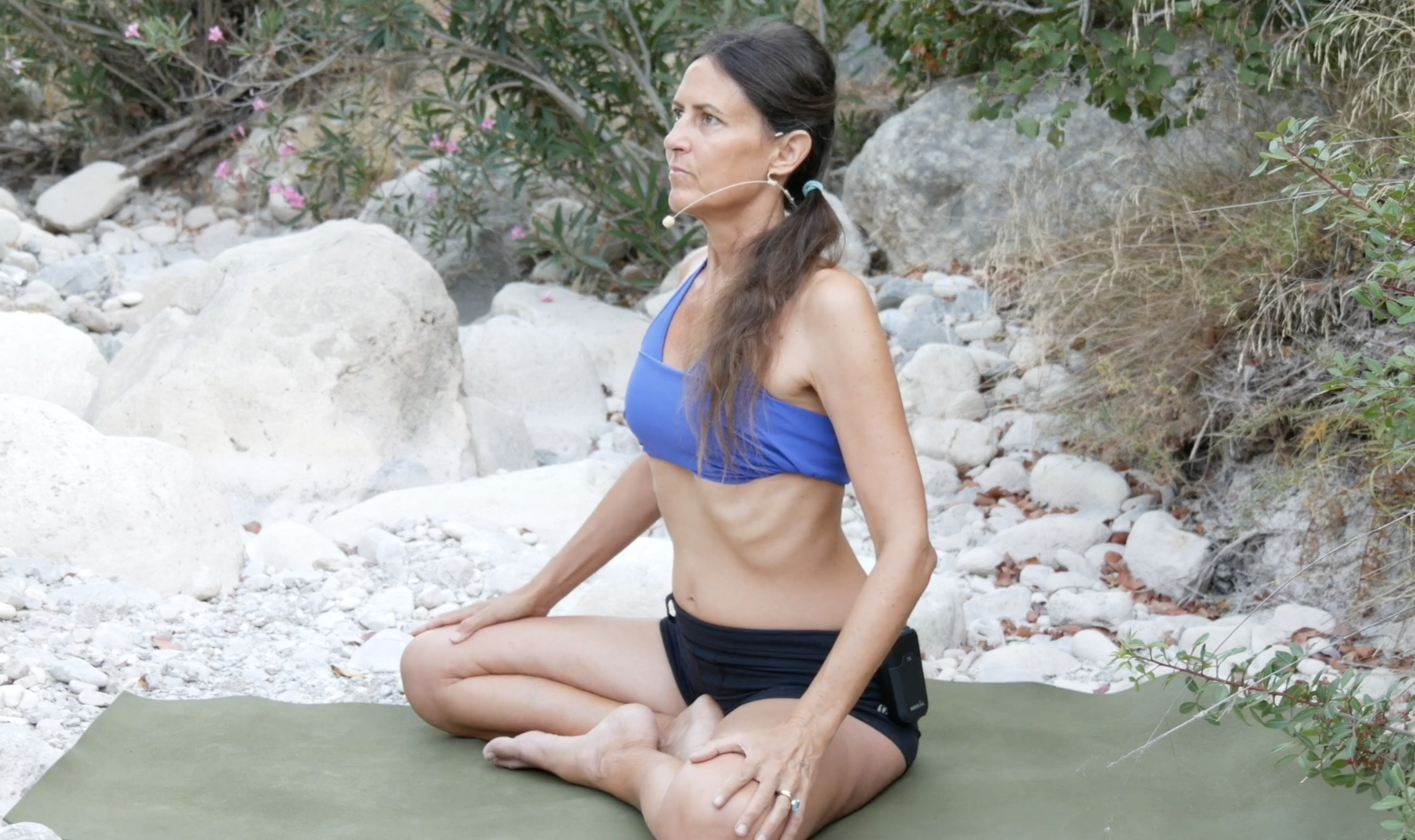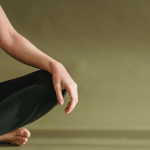In this video we’ll learn how to do a hypopressive exercise to feel more our pelvic floor lifting. Or as I like to call it, creating a vacuum. If you watch the previous video, we learned how to tap into the relationship between the pelvic floor and the diaphragm. It’s not something that is easy to do when you first start in yoga.
We call this hypopressive exercise Uddiyana Banda, it’s part of Kriya yoga. We can practice this leaning forward like the last exercise in supported child’s pose or seated in a chair. Leaning forward onto a table. We will work with the full diaphragm. Breathing and holding the breath out at the end of the exhalation. You should not practice this if you’re pregnant or recovering from a recent abdominal surgery or have higher low blood pressure.

For the purpose of this demo, I’m going to stay seated so you could see what happens to my belly and ribs when I create this vacuum or airtight chamber. Here are the steps. Please watch. Inhale to expand the belly, ribs, upper chest like we did with the three-part breathing. Filling up the container of the torso three dimensionally. I’m trying to open the rib cage as much as possible to the front, back and sides. Exhale all the breath out the belly pulls in to the back of the spine. Hold your breath out. Pinch the nose. Holding your nose closed, expand your rib cage as if to breathe in.
This type of breathing really helps to stretch the muscles in between the ribs called the intercostal muscles, really helping you to breathe to your full capacity. Recall what happens when you compress along the abdomen as you’re inhaling. Remember Mrs. Chicken and the pressure on the pelvic floor when I squeezed her belly contributes to weak pelvic floor muscles and problems like incontinence and pelvic organ prolapse. We really want to make sure that we use the lungs completely when we’re breathing.

Let’s try together now. Inhale completely. Fill up the lungs as much as possible to expand circumferentially. Exhale. It’s important to let all the breath out. Hold your breath all the way out. Pinch your nose. And while you’re holding your breath out, relax your rib cage and try to inhale with the nose pinched. Release and inhale. When you create this airtight chamber, everything draws in. You can feel this around the throat area, around the back, waist and belly. Everything will get sucked in when you allow everything to relax while expanding your rib cage while the air is held out of the lungs. And when this happens, your pelvic floor is going to lift. You won’t have to do any work to lift your pelvic floor. It will lift naturally performing this technique.
Let’s try it one more time together, with or without the nose pinch first. Inhale. Expand your rib cage. Exhale completely. Hold your breath out. Hold your breath out. With or without pinching your nose, relax your core and your rib cage. Expand your rib cage as if to breathe in. Release and inhale. It’s quite a compression. Did you notice your pelvic floor lifting? When we exhale out the lungs there are two empty sacks and there’s a lot of space for everything to move into. When everything is drawn upwards and inwards in this hyper oppressive exercise, it’s called apnea. This is your apnea. We’ll take this to another level in our next video. We’ll explore the apnea in a series of positions so you can feel the relationship to gravity.

















